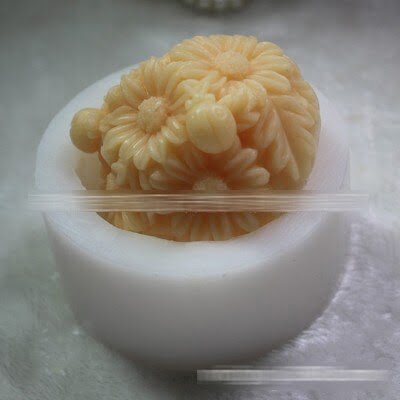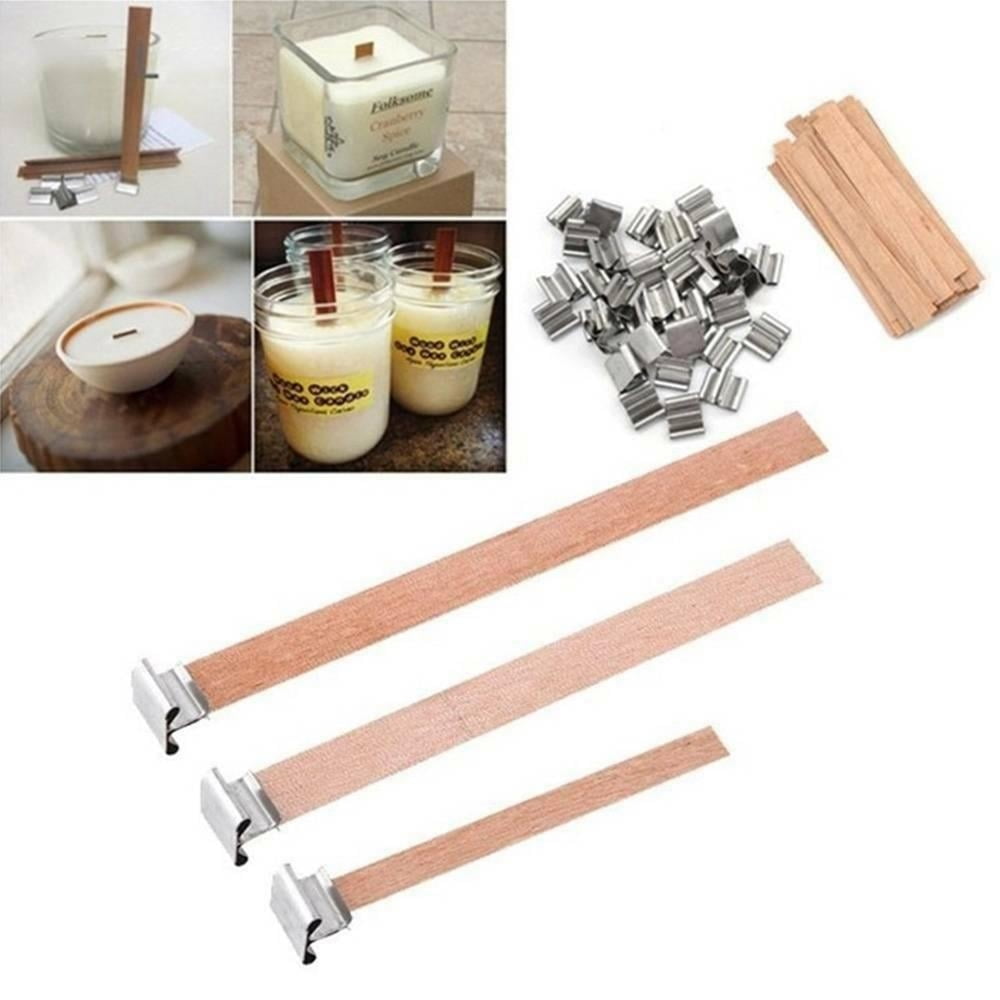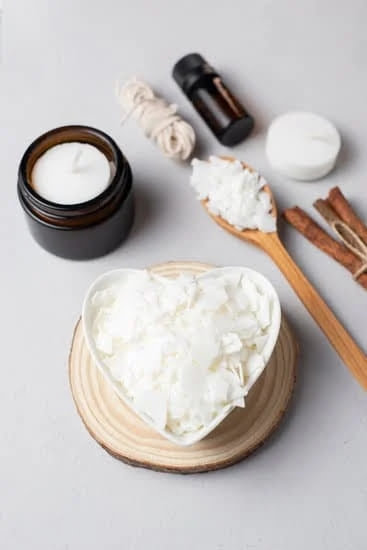When it comes to making candles, the choice of wax is a critical step that can greatly impact the overall quality and performance of the final product. This is especially true when considering whether to use soy or paraffin wax. In this article, we will delve into the intricacies of wax choice and explore how much soy versus paraffin should be used when making a candle.
Candle enthusiasts are well aware of the ongoing debate surrounding soy versus paraffin wax. Each type possesses its own unique set of characteristics that can significantly affect the candle’s burn time, scent throw, and cost. Understanding these differences allows candle makers to make informed decisions while creating their products.
When deciding on the ideal wax ratio for your candles, there are several factors to consider. Cost-effectiveness, burn time, and scent throw all play essential roles in determining the right balance between soy and paraffin. By carefully weighing these factors, you can ensure that your candles meet your desired specifications and align with your customers’ preferences.
In this comprehensive guide, we will explore both soy and paraffin waxes in depth, discussing their respective pros and cons as well as their advantages in different aspects of candle making. We will also delve into experimenting with various ratios to find the perfect blend that suits your specific needs.
Whether you are a beginner or an experienced candle maker looking to refine your craft, this article aims to provide valuable insights into achieving the highest quality candles through thoughtful wax selection.
The Difference Between Soy and Paraffin Wax
Soy and paraffin wax are two commonly used wax types in candle making. Each has its own set of pros and cons that should be considered when choosing the wax for your candles.
Soy Wax:
– Pros:
- Eco-friendly: Soy wax is made from natural soybean oil, which makes it a renewable and sustainable option. It is biodegradable and does not emit harmful toxins when burned.
- Cleaner Burning: Soy wax has a lower melting point than paraffin, which means it burns cooler and creates less soot and smoke. This makes it a healthier choice for your home environment.
- Longer Burn Time: Soy candles tend to have a longer burn time compared to paraffin candles, which means you can enjoy your candle for a longer period.
– Cons:
- Higher Cost: Compared to paraffin wax, soy wax tends to be more expensive. This is due to the cost of sourcing and processing soybean oil.
- Less Fragrance Load: Soy wax has a lower fragrance load capacity compared to paraffin, which means it may require more fragrance oil to achieve a strong scent throw.
Paraffin Wax:
– Pros:
- Tradition: Paraffin wax has been used in candle making for centuries and is considered the traditional choice. It has a long history of being reliable and consistent in producing quality candles.
- Strong Scent Throw: Paraffin wax has a higher fragrance load capacity, allowing for a stronger scent throw when compared to soy wax.
– Cons:
- Non-Renewable Resource: Paraffin is derived from petroleum, making it a non-renewable resource. Its production involves the extraction and refining processes of petroleum, which can have negative environmental impacts.
- Potential Health Concerns: When burned, paraffin candles release chemicals such as benzene and toluene, which can be harmful to human health. These emissions can contribute to indoor air pollution.
When choosing between soy and paraffin wax, it is important to consider factors such as cost, burn time, scent throw, environmental impact, and personal preference. Some candle makers may opt for a blend of both waxes in order to achieve a balance of their desired characteristics.
Experimenting with different ratios allows for personalization and customization of candles. In the next section, we will discuss how to determine the desired candle characteristics and choose the right blend of soy and paraffin wax.
Factors to Consider When Choosing the Wax Ratio
When it comes to making candles, choosing the right wax ratio is a crucial step in achieving the desired characteristics for your creation. The wax ratio refers to the combination of soy and paraffin wax used in the candle-making process. Depending on the quantities of each wax, you can achieve different results in terms of cost, burn time, and scent throw.
Cost
One important factor to consider when choosing the wax ratio is the cost. Soy wax is generally more expensive than paraffin wax due to its production process and environmental benefits. However, it is worth noting that soy wax burns slower than paraffin wax, resulting in a longer-lasting candle. This means that although soy wax may be pricier initially, it can provide better value in the long run.
On the other hand, paraffin wax is more budget-friendly and widely available. It offers a cost-effective option for candle makers who are looking to produce candles at a lower price point. However, it is essential to consider other factors such as burn time and scent throw when making a decision solely based on cost.
Burn Time
Another crucial aspect to take into account when choosing the wax ratio is burn time. Soy wax typically has a longer burn time compared to paraffin wax. This is because soy wax has a higher melting point which means it melts slower during burning, resulting in a longer-lasting candle. If you want your candles to have an extended burn time, using a higher percentage of soy wax in your blend would be ideal.
Paraffin wax, although having a shorter burn time than soy wax, provides a stronger throw of fragrance while burning. This makes it suitable for those who prioritize scent intensity over burn time. By adjusting the ratio of soy and paraffin waxes accordingly, candle makers can find the perfect balance between burn time and scent throw based on their preferences and target market.
Scent Throw
Scent throw is a crucial factor to consider when choosing the wax ratio for your candle. Soy wax has been praised for its ability to hold and release fragrance oils effectively, providing a moderate to strong scent throw. This makes it a popular choice for scented candles as it allows the fragrance to disperse throughout the room when the candle is lit.
Paraffin wax, on the other hand, is known for its strong scent throw capabilities. The chemical composition of paraffin wax enables it to hold and release fragrances more easily than soy wax. This makes it an attractive option for those who prefer highly fragrant candles that can fill large spaces with their aroma.
Determining the Desired Candle Characteristics
When it comes to candle making, one of the most important decisions you will make is choosing the right wax blend. The wax blend will ultimately determine the characteristics of your candle, such as its burn time, scent throw, and overall performance. Therefore, it is crucial to carefully consider your desired candle characteristics before deciding on a blend.
One factor to consider when choosing a wax blend is cost. Both soy and paraffin waxes have different price points, with soy wax typically being more expensive than paraffin wax. However, keep in mind that the cost of the wax is just one aspect of your overall candle-making expenses. Other factors such as fragrance oils, colorants, and additives should also be taken into account.
Burn time is another important consideration when determining the desired characteristics of your candle. Soy candles generally have a longer burn time compared to paraffin candles. If you are looking for a longer-lasting candle, using a higher percentage of soy wax in your blend would be beneficial. On the other hand, if you prefer a shorter burn time, increasing the amount of paraffin wax may be more appropriate.
Scent throw refers to how well a candle releases its fragrance into the surrounding area when lit. Both soy and paraffin waxes have their own scent throw properties. Soy candles tend to have a more subtle scent throw compared to paraffin candles, which have a stronger fragrance performance. Consider whether you want a gentle or bold scent when choosing your wax blend ratio.
| Consideration | Soy Wax | Paraffin Wax |
|---|---|---|
| Cost | Higher | Lower |
| Burn Time | Longer | Shorter |
| Scent Throw | Subtle | Stronger |
Ultimately, the desired characteristics of your candle will depend on your personal preferences and the purpose for which the candle will be used. Experimenting with different wax ratios and finding the perfect blend will help you create a candle that suits your specific needs and requirements. So, before starting your candle-making journey, take some time to determine what you want in terms of cost, burn time, and scent throw – then you can choose the right blend accordingly.
The Advantages of Using Soy Wax
Soy wax has become an increasingly popular choice among candle makers due to its many advantages. One of the key advantages of using soy wax is its environmental benefits. Soy wax is derived from soybeans, a renewable resource that can be sustainably grown and harvested. In contrast, paraffin wax is made from petroleum, a nonrenewable resource that requires drilling and refining processes.
In addition to being environmentally friendly, soy wax also offers a cleaner burning experience compared to paraffin wax. When soy wax burns, it produces much less soot than paraffin wax. This means that there will be less black residue accumulating on your walls and ceilings over time. Additionally, the absence of soot also contributes to better indoor air quality as you won’t be breathing in harmful particles.
Furthermore, another advantage of using soy wax is its ability to hold fragrance better than paraffin wax. The porous nature of soy allows for better diffusion and dispersal of fragrances throughout the room. As a result, you can enjoy a stronger and more intense scent throw with soy candles compared to those made with paraffin wax.
To summarize, the use of soy wax in candle making offers several advantages such as environmental benefits, cleaner burning with reduced soot production, and improved fragrance performance. These advantages have contributed to the increasing popularity of soy candles among consumers who are looking for more sustainable and cleaner options for their home decor and ambiance needs.
| Advantages | Soy Wax | Paraffin Wax |
|---|---|---|
| Renewable Resource | Yes | No |
| Cleaner Burning | Less soot production | More soot production |
| Fragrance Performance | Stronger and more intense scent throw | Weaker fragrance performance |
The Benefits of Paraffin Wax
Paraffin wax has been used in candle making for centuries and continues to be a popular choice among candle makers. There are several benefits to using paraffin wax, including its time-tested tradition and stronger fragrance performance.
One of the main advantages of paraffin wax is its long history and tradition in candle making. Paraffin wax has been used since the mid-19th century and has proven to be a reliable and consistent option for creating candles. It is widely available and easily accessible, making it a convenient choice for both beginner and experienced candle makers.
In addition to its tradition, paraffin wax also offers a stronger fragrance performance compared to soy wax. The molecular structure of paraffin wax allows it to hold onto fragrances more effectively, resulting in candles that have a more noticeable scent throw when lit. This makes paraffin wax an ideal choice for those who enjoy candles for their aromatic qualities.
When choosing between soy and paraffin wax, it is important to consider your personal preferences and the specific characteristics you want your candles to have. If you prioritize tradition and strong fragrance performance, paraffin wax may be the better option for you. However, if environmental benefits and cleaner burning are more important to you, then soy wax might be the preferred choice.
Overall, the benefits of paraffin wax include its time-tested tradition in candle making and its ability to provide a stronger fragrance performance. When selecting your candle-making materials, weigh the pros and cons of both soy and paraffin waxes to ensure that your final product aligns with your desired outcome.
Experimenting with Wax Ratios
When it comes to candle making, experimenting with wax ratios is a key step in finding the perfect balance and personalizing your candle. The ratio of soy wax to paraffin wax used can greatly affect the overall characteristics of the candle, including its burn time, scent throw, and overall performance. By understanding how to adjust and manipulate these ratios, you can create candles that meet your specific preferences and needs.
The Importance of Proper Wax Ratios
Finding the right balance between soy wax and paraffin wax is crucial to achieving the desired candle characteristics. Too much soy wax may result in a softer, more delicate candle that burns quickly but has a weaker scent throw. On the other hand, too much paraffin wax can lead to a harder candle with a longer burn time, but it may also have a stronger scent due to the higher fragrance load often associated with paraffin.
Personalizing Your Candle
Experimenting with different wax ratios allows you to personalize your candle based on your preferences. For example, if you prefer candles with a longer burn time and stronger fragrance, increasing the amount of paraffin wax in your blend may be beneficial. Conversely, if you prioritize environmental sustainability and cleaner burning properties, opting for a higher percentage of soy wax would be ideal.
It’s important to note that finding the perfect balance between soy and paraffin waxes may require some trial and error. Every candle maker’s preferences are unique, so don’t be afraid to experiment until you find what works best for you.
Creative Blend Ideas
Once you have mastered the basics of experimenting with wax ratios, you can explore creative blend ideas to enhance your candles further. Consider adding additional ingredients or additives like beeswax or coconut oil to create distinctive textures and scents in your candles. These additives can also help improve adhesion and overall burn performance.
How Much Soy vs Paraffin
When it comes to making a candle, one of the most important decisions you’ll need to make is the choice between soy and paraffin wax. Both types of wax have their own unique characteristics and properties, and finding the right balance between the two can greatly impact the final result of your candle. In this section, we will explore the recommended ratios and measurements for beginners who are exploring the world of soy and paraffin wax blending.
Determining the appropriate ratio of soy to paraffin wax is crucial in achieving desired candle characteristics such as burn time, scent throw, and cost effectiveness. It is generally recommended for beginners to start with a 50:50 ratio, meaning an equal amount of soy and paraffin wax. This balanced ratio allows for a good combination of benefits from both types of wax.
However, as you become more experienced in candle making and understand your own preferences better, you can experiment with different ratios to customize your candles. Increasing the amount of soy wax can result in longer burning times and cleaner burns, while increasing the amount of paraffin wax can enhance fragrance performance and provide a stronger scent throw.
| Desired Candle Characteristics | Suggested Ratio |
|---|---|
| Longer Burn Time | More Soy Wax |
| Stronger Fragrance Performance | More Paraffin Wax |
| Balanced Burn Time and Scent Throw | Equal Amounts of Soy and Paraffin Wax (50:50) |
It’s important to note that these ratios are not set in stone, and every candle maker may have their own preferences. The key is to experiment and find the perfect blend that suits your needs and preferences. Keep track of your measurements and ratios, along with any observations about the burn time, scent throw, and overall performance of your candles. This will help you refine your techniques and create consistently high-quality candles.
Remember, candle making is a creative process, and finding the right balance between soy and paraffin wax is part of the journey. Enjoy the experimentation process and don’t be afraid to try new things. With practice and experience, you’ll be able to create candles that not only look beautiful but also perform exceptionally well.
Tips for Blending Soy and Paraffin Wax
Blending soy and paraffin wax can be a great way to combine the benefits of both types of wax in candle making. However, it is important to ensure proper consistency and adhesion when working with a blend. Here are some tips to help you achieve the desired results:
Choose the Right Type of Wax
When blending soy and paraffin wax, it is important to choose a soy wax that is compatible with paraffin. Look for soy waxes that have been specifically formulated for blending, as they will have better adhesion properties when combined with paraffin.
Use Proper Heating Techniques
To ensure proper consistency and adhesion, it is crucial to heat your waxes properly. When melting the waxes together, use a double boiler or a melting pot to prevent direct heat exposure. This will help prevent overheating and scorching of the waxes, which can affect their adhesion.
Stir Thoroughly
Once the waxes are melted together, make sure to stir thoroughly to ensure proper blending. Use a heat-resistant spatula or spoon to mix the waxes until they are fully combined. This will help distribute the soy wax evenly throughout the blend, ensuring consistent burning and fragrance performance.
Test and Adjust
Before pouring your candles, it is recommended to do a small test batch with different ratios of soy and paraffin wax. This will allow you to determine the optimal blend ratio that suits your desired candle characteristics. Keep detailed notes of each test batch so you can replicate successful blends in the future.
Consider Adding Additives
If you are experiencing issues with consistency or adhesion when blending soy and paraffin wax, consider adding additives such as stearic acid or microcrystalline wax. These additives can help improve the overall performance of the blend and enhance the adhesion properties.
By following these tips, you can ensure that your blend of soy and paraffin wax has proper consistency and adhesion, resulting in high-quality candles with excellent burn time and fragrance throw. Experiment with different ratios and techniques to find the perfect blend that suits your individual preferences and candle making goals.
Troubleshooting Common Issues with Wax Blending
When it comes to blending soy and paraffin wax for candle making, there can be a few common issues that arise during the process. It’s important to be aware of these potential problems and know how to troubleshoot them in order to achieve the desired results. The following section will provide some tips and solutions for three common issues: overheating, sinking, and separation.
- Overheating: One problem that candle makers may encounter when blending soy and paraffin wax is overheating. Overheating can lead to discoloration of the wax or even cause it to become scorched, resulting in a less desirable finished product.
To prevent this issue, it is recommended to melt the waxes at a low temperature and monitor the heat closely throughout the blending process. Using a double boiler or a dedicated melting pot specifically designed for candle making can help regulate the temperature more effectively. - Sinking: Another issue that may occur when working with blended waxes is sinking. Sinking happens when the fragrance oil or additives in the wax settle at the bottom of the container instead of being evenly distributed. This can result in an uneven scent throw or an unattractive appearance.
To avoid sinking, it is important to thoroughly mix the fragrance oil into the melted wax before pouring it into molds or containers. Stirring gently but consistently can help ensure that all components are well incorporated. - Separation: Separation is a common problem encountered with blended waxes, where different types of wax separate from each other instead of merging together smoothly. This can result in an inconsistent texture and appearance of the candle once it has cooled down.
To prevent separation, make sure to thoroughly blend both types of wax while they are in their liquid state before pouring them into molds or containers. Mixing for an adequate amount of time and pouring the wax at a slightly higher temperature can help facilitate better blending and reduce the chances of separation occurring.
By being aware of these common issues and following the troubleshooting tips provided, candle makers can minimize the likelihood of encountering problems when blending soy and paraffin wax. With proper attention to detail and experimentation with different techniques, it is possible to create beautifully crafted candles that combine the benefits of both types of wax, resulting in a product that meets your desired aesthetic and scent preferences.
Conclusion
In conclusion, when it comes to making candles, the choice of wax is crucial in achieving the desired results. Understanding the difference between soy and paraffin wax, along with considering factors such as cost, burn time, and scent throw, is essential in determining the right blend for your candle.
Soy wax offers several advantages such as environmental benefits and cleaner burning. It is a more sustainable option compared to paraffin wax, making it an ideal choice for those looking for eco-friendly alternatives. Additionally, soy wax has a lower melting point which allows for a longer burn time and better scent throw.
On the other hand, paraffin wax has been a time-tested tradition in candle making. It provides a stronger fragrance performance compared to soy wax. Paraffin is well-known for its ability to hold and release fragrances effectively, creating a more potent scent experience.
To find the perfect balance between soy and paraffin, experimenting with different wax ratios is key. By customizing the blend according to your preferences, you can create a candle that meets your exact specifications. Beginners can start with simple ratios and measurements provided by experts in the field of candle making.
When blending soy and paraffin waxes together, it is important to ensure proper consistency and adhesion. Following tips such as using appropriate additives or stirring techniques can help achieve a smooth and even blend. Troubleshooting common issues like overheating, sinking or separating can be resolved through careful monitoring of temperatures and employing correct pouring techniques.
Overall, striking a balance between soy and paraffin waxes allows you to create your perfect candle that combines the environmental benefits of soy wax with the fragrance performance of paraffin wax. With some experimentation, attention to detail, and creativity, you can enjoy both the aesthetic appeal and soothing ambiance provided by a well-crafted candle.
Frequently Asked Questions
What should be the ratio of soy and paraffin wax?
The ratio of soy and paraffin wax used in candle-making can vary depending on the specific needs and preferences of the candle maker. Generally, a common ratio is 50:50, meaning equal parts soy wax and paraffin wax. This ratio tends to strike a balance between the benefits of both types of wax.
Soy wax offers a more natural and eco-friendly option, while paraffin wax provides a longer burning time and stronger scent throw. However, it’s important to note that the ratio can be adjusted based on personal preference, desired characteristics of the candles, and the specific properties of the chosen waxes.
Should I use paraffin or soy wax for candles?
When deciding between using paraffin or soy wax for candles, several factors should be considered. Paraffin wax is a traditional choice that has been widely used for many years. It offers excellent scent throw and produces shiny candles with a smooth appearance. Additionally, paraffin wax tends to have a longer burning time than some other waxes.
On the other hand, soy wax is a renewable resource made from soybean oil and offers a more environmentally friendly option compared to paraffin wax derived from petroleum. Soy candles also tend to burn cleaner with less soot production and potentially release fewer toxins into the air when lit. Therefore, choosing between paraffin or soy wax ultimately depends on individual preferences regarding environmental impact, burn time, appearance, scent throw, and other desired qualities in the finished candles.
How much paraffin wax is needed to make a candle?
The amount of paraffin wax needed to make a candle depends on several factors such as its desired size, shape, type of container (if any), and the intended result in terms of fragrance load and burn time. Generally speaking, candle makers typically measure their ingredients by weight rather than volume to ensure accuracy and consistency in their recipes.
It’s advisable to consult specific candle-making guides or follow established recipes that provide instructions on how much paraffin wax to use based on the specific candle size or type being created. By following a recipe or using a reliable candle-making guide, candle makers can determine the appropriate amount of paraffin wax needed to achieve their desired candle.

Welcome to my candle making blog! In this blog, I will be sharing my tips and tricks for making candles. I will also be sharing some of my favorite recipes.





